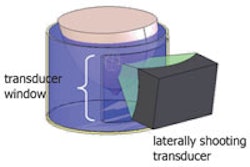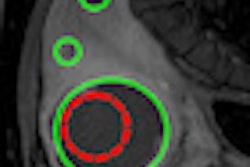Dear Ultrasound Insider,
While many incidental solid focal liver lesions detected on CT or MR are benign, they can also present with equivocal contrast enhancement patterns that lead to low diagnostic confidence and unnecessary biopsy or long-term imaging follow-up. But contrast-enhanced ultrasound can help clear up the picture, according to researchers from the University of Trieste in Italy.
The study team found that adding contrast-enhanced ultrasound significantly improved both diagnostic confidence and accuracy in lesion characterization. Our coverage of the research is this month's Insider Exclusive, which you have access to before it's published for the rest of our AuntMinnie.com members.
To learn more about the value of contrast-enhanced ultrasound in these focal liver lesions, click here.
In other ultrasound articles we're featuring this month, ultrasound elastography was recently found to be superior to MR diffusion-weighted imaging in determining the malignancy of breast masses.
However, whole-breast ultrasound was bested by contrast-enhanced breast MRI for identifying extent of disease and contralateral lesions in women with newly diagnosed breast cancer.
And in legislative news, Kentucky is the latest state to consider requiring that women seeking an abortion be shown an ultrasound image of their fetus. Get an update by clicking here.
Also, learn how intravascular ultrasound can help guide coronary bifurcation stents, and how translabial ultrasound can assist in labor assessment. Unfortunately, bladder weight estimated by ultrasound did not correlate with lower urinary tract obstruction, according to a new study.
Finally, a review of the Czech Republic's national prenatal ultrasound screening program showed significant and improving antenatal detection of congenital heart disease, but mortality remains high -- get the details by clicking here.
Do you have an idea for a topic you'd like to see covered in the Ultrasound Digital Community? As always, please feel free to drop me a line.




















